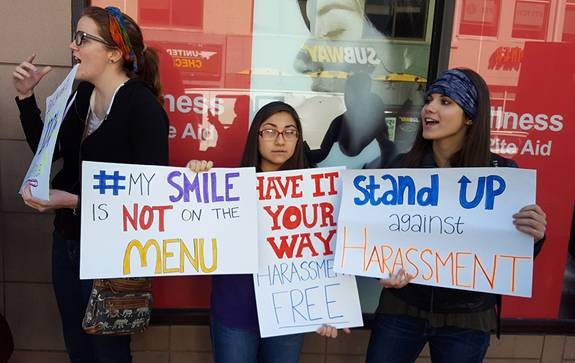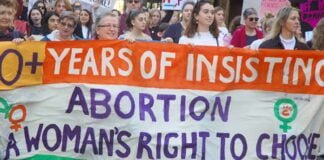Nearly a year after its release, Prime Minister Scott Morrison has finally responded to the Respect@Work report. His “Roadmap for Respect” agrees with or notes the 55 recommendations of the report but does not commit to fully implement them.
Workplace sexual harassment is appallingly widespread. Fully 39 per cent of women have experienced workplace sexual harassment in the past five years and more than 85 per cent of women over the age of 15 in their lifetime. Yet less than one in five people who experience harassment makes a formal complaint.
The disgust at the Coalition’s failure over sexual assault in parliament, and the nationwide March 4 Justice protests, have forced Morrison to act.
The report recommended a series of legal changes including the extension of liability to people who aid or permit sexual harassment at work, longer time frames to lodge a legal complaint, and the possibility of dismissal for workplace sexual harassment. But the government has rejected its advice to place obligations on employers to prevent harassment, claiming these already exist in workplace health and safety laws.
The report also criticised inadequate funding for services, including the 1800RESPECT domestic violence hotline, where the Coalition has cut costs. It also called for funding for Working Women’s Centres and Community Legal Centres, whose funding was initially cut by the Liberals and then restored after an outcry over the effects on Indigenous people and survivors of domestic violence.
But they remain chronically underfunded with specialist women’s legal services needing an extra $25 million a year to support women experiencing domestic violence. Morrison has failed to guarantee any extra money.
Retail sector
Sexual harassment is a product of the sexism that exists across society, but is more likely where women have less power at work.
The experience of women in the retail sector is one example. Workers here are often young and insecurely employed. So the risk of sexual harassment is even higher. Around half of women experienced sexual harassment seven times in a year, an Australian Human Rights Commission report found in 2019.
A 2020 survey by the Retail and Fast Food Workers Union (RAFFWU) found sexual harassment was rampant at JB Hi-Fi. Almost half of surveyed members had experienced discussion about hiring women on the basis of their appearance, comments about women’s bodies, or the use of gendered language such as “bitchy” or “bossy” to refer to women staff. More than half had also experienced unwelcome touching or sexual advances at work.
Sexual harassment is mostly committed by co-workers and supervisors, with customers also responsible in one-third of cases.
But fewer than 3 per cent of bosses are reported for sexual harassment. Even former NSW Liberal MP Pru Goward concedes that this reflects the power of bosses to fire anyone who speaks out.
Alongside the rise of casualisation and insecure work, a 2018 survey by the Australian Human Rights Commission found that workplace sexual harassment has actually increased in the past 15 years.
Insecurely employed
Women make up 47.2 per cent of all Australian employees. But they are also more likely to be insecurely employed, making up 67.2 per cent of part-time employees and on average earn 13.4 per cent less than men.
Casualisation leaves women without the confidence of a secure job to speak up about abuse and harassment. And the Coalition’s efforts to encourage more workplace “flexibility” will only make this worse.
For migrant women, precarious employment linked to their visa status makes it even harder, with one union member stating, “I’m worried that if I lose this job I won’t be able to find another permanent job in Australia. That makes it hard to say anything.”
Education campaigns and legal changes will do little to help. The reason so few women report their experiences is that few have any confidence in what will happen.
Union workplace organising is the key to building the power at work to address the issue, along with fighting the conditions that leave women vulnerable to abuse in the first place.
There are many examples of this. In 2018, workers walked out of McDonald’s franchises across the US after management refused to take harassment complaints seriously, as part of the Fight for $15 an hour wage campaign.
And in 2019, a strike of 800 workers at Chemist Warehouse distribution centres in Melbourne and Brisbane united men and women workers behind a campaign against sexual harassment and bullying after workers reported that managers had offered shifts in exchange for sex. The industrial action forced one manager involved to resign and also won pay rises and permanent jobs for many workers.
To fight sexual harassment at work, we need to fight for secure and well paid jobs that give women the confidence to stand up to abuse.
By Ruby Wawn






